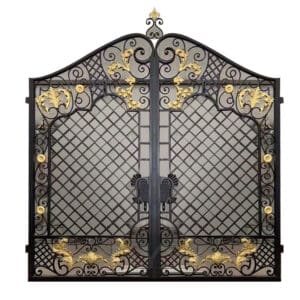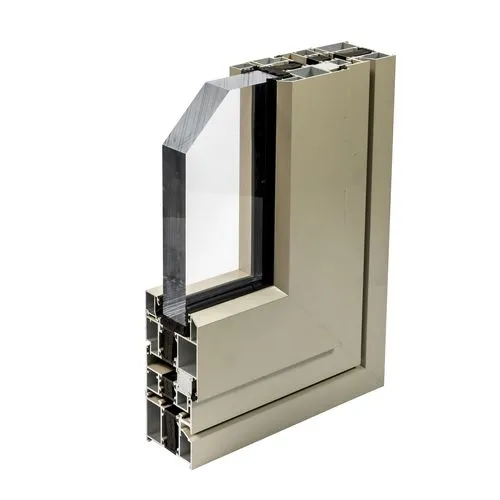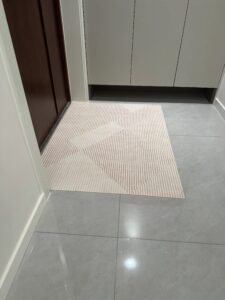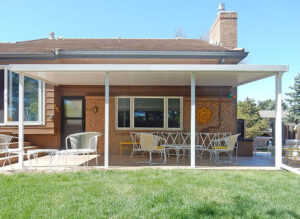
How to get custom aluminum doors?
How to get custom aluminum doors? Need sleek, durable entryways but overwhelmed by options? Custom aluminum doors range from $1,200-$8,000+ installed, with lead times of
Aluminum doors have become increasingly popular in modern architecture and design due to their sleek appearance, durability, and resistance to corrosion. However, like any material, aluminum comes with its own set of disadvantages. This article aims to provide a comprehensive overview of the drawbacks associated with aluminum doors, helping consumers make informed decisions when considering them for their homes or businesses.

One of the most significant disadvantages of aluminum doors is their high initial cost. Aluminum as a raw material is more expensive than wood, vinyl, or fiberglass. The manufacturing process for aluminum doors is also more complex, adding to the overall cost. While the long-term benefits, such as durability and low maintenance, can offset these initial expenses, the upfront investment can be a barrier for many homeowners and businesses.
Aluminum is a highly conductive material, which means it can transfer heat and cold very efficiently. This property can be a disadvantage in terms of energy efficiency. During hot weather, aluminum doors can allow heat to enter a building, increasing cooling costs. Conversely, in cold weather, they can let heat escape, leading to higher heating bills. Modern aluminum doors often include thermal breaks or are fitted with insulation to mitigate this issue, but they still may not be as energy-efficient as other materials like wood or vinyl.
Due to their high thermal conductivity, aluminum doors can be prone to condensation. When warm, moist air comes into contact with the cool surface of an aluminum door, it can condense into water droplets. This can lead to moisture problems, including mold and mildew growth, which can be particularly problematic in humid climates. Proper insulation and the use of thermal breaks can reduce condensation, but these solutions are not always entirely effective.
While aluminum doors are praised for their modern and sleek appearance, they may not fit well with all architectural styles. Traditional or rustic homes, for instance, may not benefit from the contemporary look of aluminum doors. Wood doors, with their natural texture and warmth, might be more suitable for such settings. Additionally, aluminum doors typically come in a limited range of colors and finishes compared to other materials, which can restrict design flexibility.
Aluminum doors generally offer less noise insulation compared to doors made from wood or composite materials. Aluminum’s lightweight and thin profile do not provide as much of a sound barrier, which can be a significant disadvantage in noisy environments or for buildings located in busy urban areas. To address this issue, some aluminum doors are designed with additional insulation or double-glazing, but these enhancements add to the cost and complexity of the doors.
Although aluminum is known for its resistance to rust and corrosion, it is not entirely immune. In certain environments, especially coastal areas with salty air, aluminum can corrode over time. This type of corrosion, known as “pitting,” can compromise the structural integrity and appearance of the doors. Protective coatings and regular maintenance can help prevent corrosion, but these measures require additional effort and expense.
Aluminum, while strong and durable, is also relatively soft compared to materials like steel. This means it can be susceptible to dents and scratches. Heavy impacts or abrasive cleaning methods can mar the surface of aluminum doors, leading to aesthetic issues and potentially reducing their lifespan. While minor scratches can often be buffed out, more significant damage might require professional repair or even replacement of the door.
The production of aluminum doors has a considerable environmental impact. Aluminum extraction and processing are energy-intensive activities that contribute to greenhouse gas emissions. Although aluminum is recyclable, the recycling process itself consumes a significant amount of energy. Consumers who prioritize sustainability might prefer doors made from materials with a lower environmental footprint, such as sustainably sourced wood or recycled composites.
While aluminum doors are generally low maintenance compared to wood, they are not entirely maintenance-free. Regular cleaning is necessary to prevent the buildup of dirt and grime, which can affect the appearance and function of the doors. Additionally, the protective coatings applied to aluminum doors can wear down over time, necessitating periodic reapplication to prevent corrosion and maintain their appearance.
In terms of security, aluminum doors can be less robust than steel or solid wood doors. Their lightweight construction, while beneficial for ease of use, can also make them more vulnerable to forced entry. Modern aluminum doors often incorporate advanced locking mechanisms and reinforced frames to enhance security, but these additions can increase the cost and complexity of the doors.
Aluminum doors offer numerous advantages, including durability, a modern aesthetic, and low maintenance. However, they also come with several disadvantages that potential buyers should consider. High initial costs, thermal conductivity issues, condensation, limited aesthetic options, noise insulation concerns, potential for corrosion, susceptibility to dents and scratches, environmental impact, maintenance requirements, and security concerns are all factors that can influence the decision to choose aluminum doors.
When selecting doors for a home or business, it is essential to weigh these disadvantages against the benefits to determine if aluminum is the right choice. In some cases, alternative materials such as wood, vinyl, or fiberglass might offer a better balance of performance, cost, and aesthetic appeal. By carefully considering all aspects, consumers can make informed decisions that best meet their needs and preferences.

How to get custom aluminum doors? Need sleek, durable entryways but overwhelmed by options? Custom aluminum doors range from $1,200-$8,000+ installed, with lead times of

How to make custom door mats? Want personalized home entryways without $75+ retail markups? Crafting custom doormats costs just $15-$35 using accessible outdoor-grade materials like

How much do custom window screens cost? Frustrated by insects ruining your fresh air enjoyment? Custom window screens typically cost $50-$300 per unit installed –

What is the best type of wall covering? Tired of staring at dull walls but overwhelmed by options? The “best” wall covering depends entirely on

How to import better doors and windows from China? Want high-quality building products at 30-50% below local prices? Importing from China can save you thousands

Is it cheaper to build a pergola or buy one? Struggling to decide between DIY construction and pre-built pergolas? Building your own typically costs 40-60%